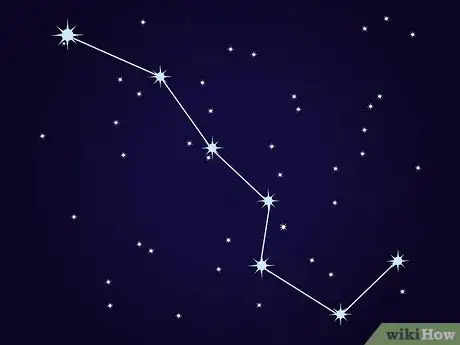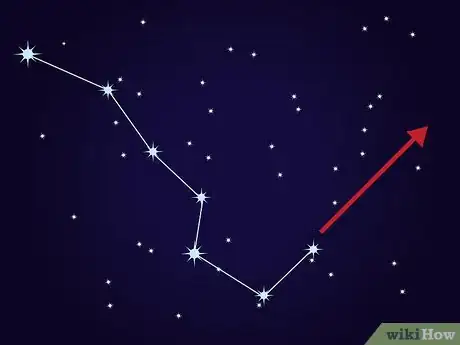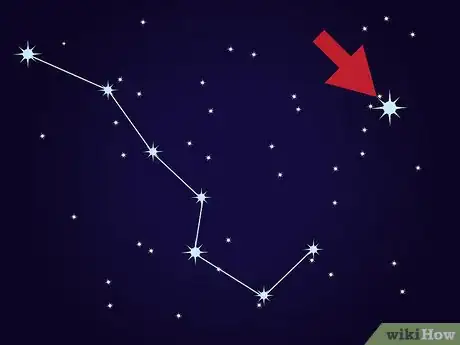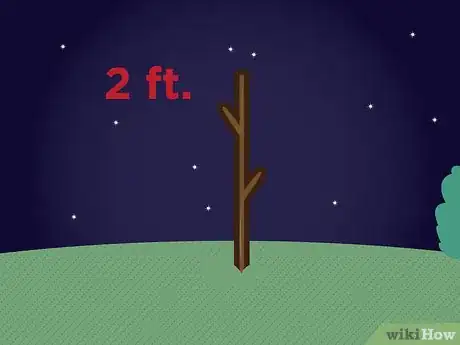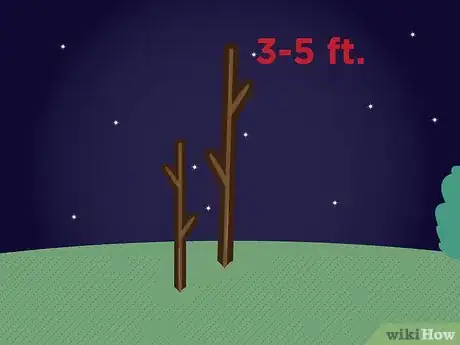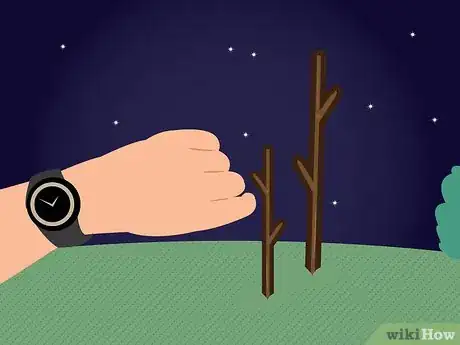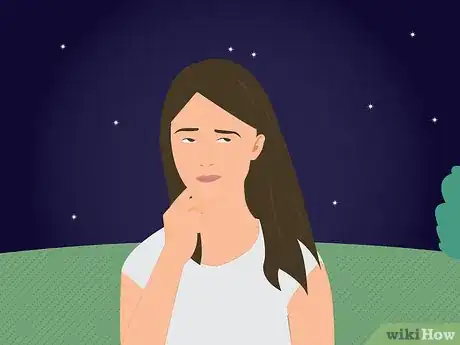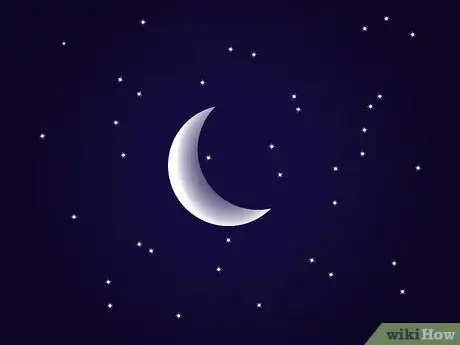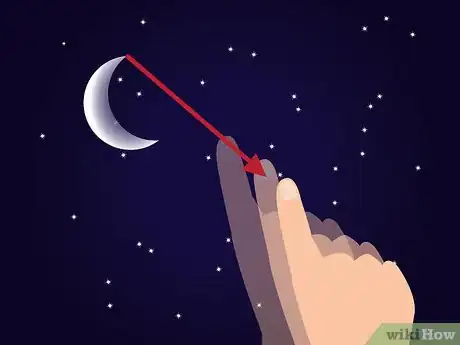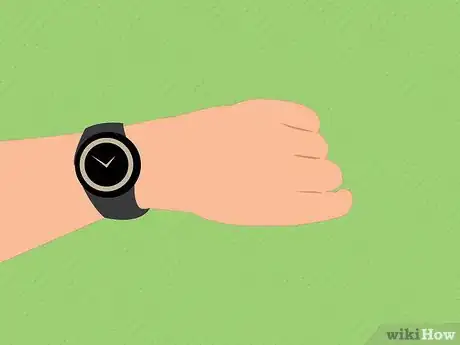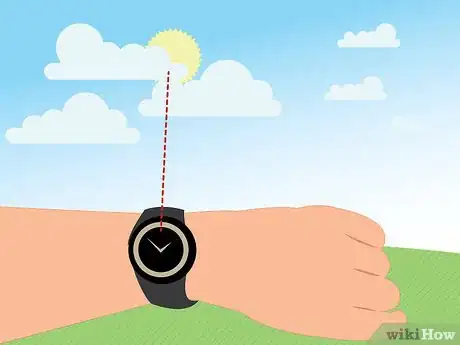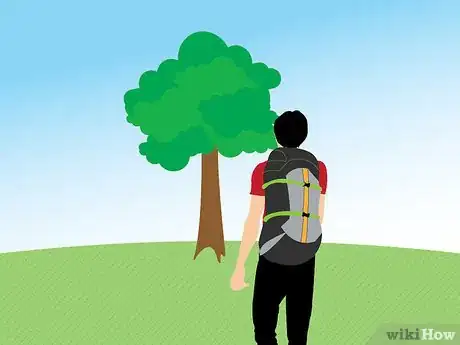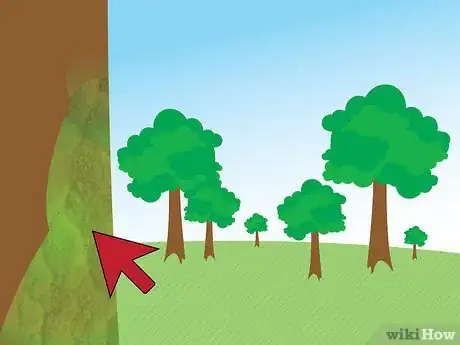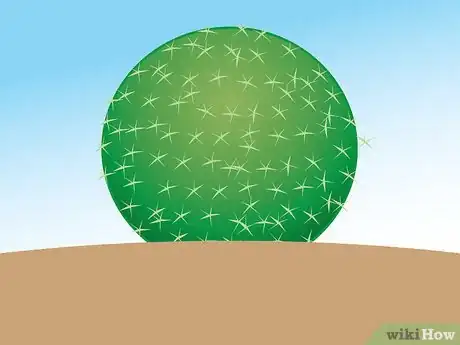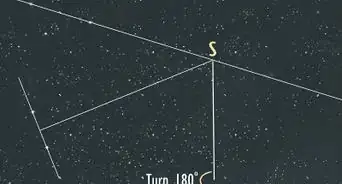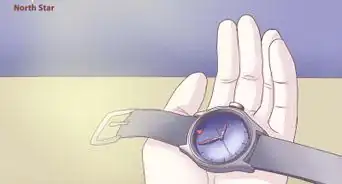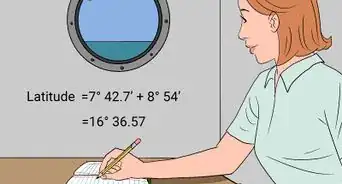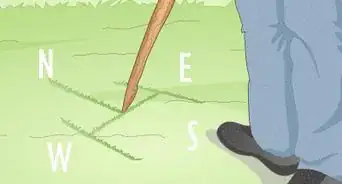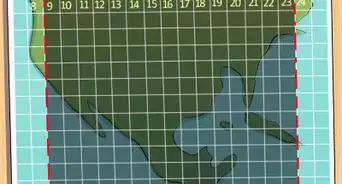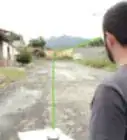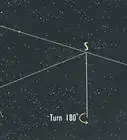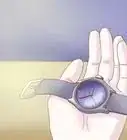This article was co-authored by Josh Goldbach. Josh Goldbach is an Outdoor Education Expert and the Executive Director of Bold Earth Adventures. Bold Earth leads adventure travel camps for teenagers all over the world. With almost 15 years of experience, Josh specializes in outdoor adventure trips for teens both in the United States and internationally. Josh earned his B.A. in Psychology from Eckerd College in St. Petersburg, Florida. He’s also trained as a wilderness first responder, a Leave No Trace master educator, and a Level 5 Swiftwater rescue technician.
There are 8 references cited in this article, which can be found at the bottom of the page.
wikiHow marks an article as reader-approved once it receives enough positive feedback. This article has 24 testimonials from our readers, earning it our reader-approved status.
This article has been viewed 365,131 times.
Hiking or camping can be a fun, exciting way to take in the great outdoors. But if you're traveling in an area that you're not very familiar with, it can often be easy to move off trail and lose your way. While you should always have a compass in your supplies to be safe, you may sometimes find yourself without a navigational tool. Fortunately, there are several ways to find your direction without the help of a compass—so you may want to brush up on a few of them before your next hiking or camping trip just to be safe.
Steps
Using the North Star at Night in the Northern Hemisphere
-
1Identify the Big Dipper. The Big Dipper is comprised of seven of the sky's brightest stars, and is found either high or low in the northern sky, depending on the season. It also rotates around the North Star, which is why it's important when you're trying to find your direction in the Northern Hemisphere. As long as you're located no lower than about 39 degrees north latitude (the latitude of Washington, DC), the constellation is always above the horizon. (You can see the Big Dipper at a lower latitude if you're on the ocean.) Four of the stars form the Big Dipper's bowl, while the other three form a handle.[1]
- The phrase “spring up and fall down” can help you figure out where to look in the sky for the Big Dipper based on the seasons. In the spring and summer, it's located high in the sky. On fall and winter nights, you'll find it lower in the sky, closer to the horizon.
-
2Use the pointer stars to find the North Star. Regardless of the season, the two stars that form the outer edge of the Big Dipper's bowl always point toward the North Star. If you draw an imaginary line from the pointer stars across the sky to the next brightest star, you'll find the North Star.[2]
- If you're having trouble finding the North Star, stretch your arm out completely and spread your fingers. The distance between the top pointer star and the North Star should be about the same distance as your thumb is from your middle finger.
Advertisement -
3Locate north. Unlike the stars in the Big Dipper constellation, the North Star is always located at a fixed point in the sky, which leaves it never more than 1 degree from true north. That means when you've identified the North Star in the sky, you know that you're facing north. From that position, the opposite direction would be south, while east would be to your right and west would be to the left.[3]
- Using the North Star to find your direction works best on a clear night. If the sky is hazy or there are clouds, you may not be able to easily identify the Big Dipper.
- If you're in an area where mountains, trees, or other objects are blocking the night sky, you may not be able to use the North Star to find your direction either.
Using Two Sticks at Night in the Northern Hemisphere
-
1Drive a stick into the ground. Try to find a stick that is approximately 2-feet long and push it into the ground just enough to secure it so it stands upright. It's also important to choose a stick that is as straight as possible. Once it's firmly in the ground, sit or crouch beside the stick so that its tip is at your eye level.[4]
- If you can't find a stick that is long enough, tent poles also work well.
-
2Place a taller stick behind the first. The stick should be approximately 3- to 4-feet long so that its tip stands above the tip of the first stick. From your seated or crouched position, use the tips of both sticks to line up on a bright star in the sky. You may need to move the sticks slightly to line up the star properly[5]
- You'll know that you have the sticks set up properly if you draw an imaginary line between your eye, the tops of the sticks, and the star.
-
3Wait several minutes. You need to give the star some time to “move”. Keep in mind that the star doesn't actually move; the Earth rotates, which makes the star appear to have moved. The key is to be patient -- it can take anywhere from 5 minutes to a half hour for you to notice the movement. The way that the star “moves” will help you figure out the direction in the Northern Hemisphere.[6]
- If the star moves up, you are facing east.
- If it moves down, you are facing west.
- If it moves right, you are facing south.
- If it moves left, you are facing north.
- In some cases, the star may appear to move in two directions. For example, it might move up and to the right, which means that you're facing southeast.
Using the Crescent Moon at Night
-
1Identify whether you're in the Northern or Southern Hemisphere. Depending on what hemisphere you're located in, the crescent moon will help you identify either south or north. The Northern Hemisphere is the portion of the earth that's north of the equator, while the Southern Hemisphere is comprised of the area below the equator.[7]
- All of North America and Europe are in the Northern Hemisphere. The northernmost portion of South America, two-thirds of Africa, and most of Asia are also in the Northern Hemisphere.
- Australia, Antarctica, the southern third of Africa, approximately 90 percent of South America, and some southern islands off the coast of Asia are in the Southern Hemisphere.
-
2Locate the crescent moon. This method for finding your direction only works if the moon is in either the waxing crescent or waning crescent phases, which occur approximately seven days in each calendar month. The crescent phases typically occur at the beginning and end of the month.[8]
- If you're not sure whether there will be a crescent moon on a given evening, there are a number of online calendars that provide the lunar phases for each month. Just do a search for “moon phases calendar” or “lunar phases calendar.”
-
3Draw an imaginary line from the moon's “horns” to the horizon. With your gaze fixed firmly on the moon, imagine a line from the two points of the crescent that tracks all the way down to the bottom of the skyline. If you are in the Northern Hemisphere, the point where the line meets the horizon is roughly south. In the Southern Hemisphere, the point where the line meets the horizon is roughly north.[9]
- If you are having trouble following the imaginary line down to the horizon, it may help to hold a stick through the tips of the crescent moon as a guide.
Using an Analog Wristwatch During the Day
-
1Ensure that your watch is accurate. In order for this method to work, you must have an analog watch with hands that is set to the correct time. Verify that your watch is in proper working order, and both hands are moving as they should.[10]
- You won't be able to use this method if you have a digital watch because the analog watch's hour hand is crucial to helping you find your direction.
-
2Hold the watch level with the ground. It's best if the watch is also on a level surface. Try taking it off your wrist and placing it so it rests flat against the palm of your hand. You should be holding it in front of you as you would a compass.[11]
- It's often easier to hold the watch steady if you use your free hand to support the hand holding the watch from underneath.
-
3Position the watch based on the hemisphere. The procedure for finding your direction with the watch differs based on where you are in the world. If you are in the Northern Hemisphere, position the watch so the hour hand points at the sun. In the Southern Hemisphere, hold the watch so the “12” is pointed at the sun.[12]
- In the Northern Hemisphere, look at where “12” is on your watch with the hour hand pointed at the sun. Find the halfway point between it and the hour hand -- that direction would be south, while the opposite direction would be north.
- If you are in the Southern Hemisphere, look at where the hour hand is on your watch with the “12” pointed at the sun. Find the halfway point between it and the “12”-- that direction would be north, while the opposite would be south.
- During daylight savings time, which occurs spring through early fall, your direction will be slightly off. To get the correct direction, adjust your watch's hour hand earlier by one hour to get the most accurate results.
Observing Nature During the Day
-
1Evaluate the trees for their heaviest side. Trees are rarely symmetrical, so one side always seems to have more growth than another. Because plants need sunlight to grow, the side that gets the most sunlight will usually appear heavier. In the Northern Hemisphere, the sun spends most of its time in the southern part of the sky, so the denser side of the tree will usually be facing south. In the Southern Hemisphere, the heavier portion of the tree usually points north.[13]
- In order to accurately decide which side of the tree is the heaviest, you should walk all the way around it a few times. If you only look at one or two sides, you may not be able to tell where the tree is most dense.
- It's easiest to use this method with lone trees in an open field. In a wooded area, trees compete for sunlight, so it's not as obvious which direction they're growing in.
-
2Look for moss on trees. In many cases, moss tends to grow on the side of the trees that are most shaded. In the Northern Hemisphere, that means you would usually find moss on the side of the tree that points north. In the Southern Hemisphere, you would typically find moss on the side of the tree that points south.[14]
- It's important to keep in mind that other factors can create shady conditions that would encourage moss to grow on a certain side of a tree. Trees that are shaded by other trees in a wooded area and trees that grow on slopes may throw off your direction.
-
3Look for the giant barrel cactus in the desert. This cactus, which is native to the southwestern United States and northern Mexico, grows slanted toward the south. That's because the northern side of the plant is mostly shielded from the sun, so it grows more quickly. If you spot a giant barrel cactus, you'll know the direction that it's growing toward is south, so the opposite direction is north.
- The giant barrel cactus typically grows between 3- and 9-feet, and features spines in a variety of colors, including red, tan, and yellow. Older cacti often produce bright orange or yellow flowers.
Community Q&A
-
QuestionHow do I find out what way I am facing by using the sun?
 Community AnswerTrack the location and movement of the sun in the sky over an hour or two. The sun and moon both generally move east to west.
Community AnswerTrack the location and movement of the sun in the sky over an hour or two. The sun and moon both generally move east to west. -
QuestionWhich is the heaviest side of a tree?
 Community AnswerThe side of a tree that is the fullest or most grown.
Community AnswerThe side of a tree that is the fullest or most grown. -
QuestionHow do we find directions on overcast sky day/night?
 Community AnswerWhen you can't use the sun, moon, or stars to navigate, observing nature is often the best way to find your direction. Looking to see which side of the tree is heaviest, as described above, can help you differentiate between north and south.
Community AnswerWhen you can't use the sun, moon, or stars to navigate, observing nature is often the best way to find your direction. Looking to see which side of the tree is heaviest, as described above, can help you differentiate between north and south.
Warnings
- If you've planning a hiking or camping trip to an area that you've never been before, it's best to invest in a compass or GPS device. It can be very easy to get lost in unfamiliar terrain, and you can wind up in serious danger if you can't find your way back to the trail.⧼thumbs_response⧽
- Although compasses are incredibly useful devices, they can do a lot more harm than good if you don't know exactly how to use them. A phone with GPS is usually a better idea to find yourself in an unknown location.⧼thumbs_response⧽
Expert Interview

Thanks for reading our article! If you’d like to learn more about camping, check out our in-depth interview with Josh Goldbach.
References
- ↑ http://earthsky.org/favorite-star-patterns/big-and-little-dippers-highlight-northern-sky#how
- ↑ http://www.almanac.com/content/find-your-way-without-compass
- ↑ http://seattlebackpackersmagazine.com/finding-direction-without-compass/
- ↑ http://www.secretsofsurvival.com/survival/find-true-north-without-a-compass.html
- ↑ http://www.secretsofsurvival.com/survival/find-true-north-without-a-compass.html
- ↑ http://www.almanac.com/content/find-your-way-without-compass
- ↑ http://modernsurvivalblog.com/survival-skills/find-your-direction-by-the-moon/
- ↑ http://www.space.com/6650-moon-phases-work.html
- ↑ http://modernsurvivalblog.com/survival-skills/find-your-direction-by-the-moon/
- ↑ http://www.secretsofsurvival.com/survival/find-true-north-without-a-compass.html
- ↑ http://www.secretsofsurvival.com/survival/find-true-north-without-a-compass.html
- ↑ http://www.secretsofsurvival.com/survival/find-true-north-without-a-compass.html
- ↑ http://www.naturalnavigator.com/find-your-way-using/plants
- ↑ http://mentalfloss.com/article/56243/does-moss-really-only-grow-north-side-trees
About This Article
To find direction without a compass at night in the Northern Hemisphere, locate the Big Dipper in the sky, which points directly at the North Star and indicates that you're facing north. If the night is clear and the moon is in a crescent phase, you can imagine lines going from the two points of the crescent all the way down to the bottom of the skyline. If you are in the Northern Hemisphere, the point where the line meets the horizon is south. In the Southern Hemisphere, the point where the line meets the horizon is north. For tips on figuring out direction during the daytime, read on!
